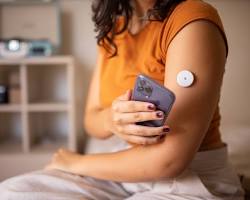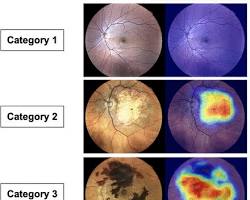Diabetes-related sight loss, primarily caused by diabetic retinopathy (DR), is a leading cause of blindness worldwide. According to the International Diabetes Federation (IDF), about 537 million adults were living with diabetes in 2021, and this number is expected to rise significantly by 2045. Of these individuals, approximately one-third are likely to develop diabetic retinopathy, which can lead to permanent vision loss without timely intervention.
AI is revolutionizing healthcare, particularly in preventing diabetes-related sight loss, by enhancing early detection and monitoring.
How AI is Transforming Healthcare, especially diabetes
AI-powered solutions are reshaping how healthcare providers address diabetes-related eye diseases, offering better outcomes for patients through early detection and monitoring. Here’s how AI is playing a critical role:
Understanding Diabetes Retinopathy
What is Diabetes Retinopathy?
Diabetic retinopathy occurs when high blood sugar damages the blood vessels in the retina, the light-sensitive tissue at the back of the eye. In its early stages, symptoms may be mild or absent. However, as the condition progresses, it can lead to swelling, bleeding, and scarring that can impair vision.
Why Early Detection Matters
Up to 95% of diabetes-related vision loss can be prevented with early intervention. Regular screenings are essential, but many individuals, especially those in underserved areas, lack access to timely eye care. This is where AI bridges the gap.

AI in Early Detection of Diabetes Retinopathy
How AI Systems Work
AI algorithms are trained on vast datasets of retinal images, learning to identify patterns associated with diabetic retinopathy, such as microaneurysms and hemorrhages. Tools like Google’s DeepMind and IDx-DR demonstrate AI’s capabilities:
- DeepMind achieved 94% accuracy in detecting diabetic retinopathy, matching expert ophthalmologists.
- IDx-DR, an FDA-approved tool, autonomously detects diabetic retinopathy without requiring a physician’s input.
Scalability and Accessibility
AI-powered tools can analyze thousands of retinal images in minutes, making them ideal for:
- Remote areas: Mobile screening units equipped with AI-driven diagnostics provide care in underserved regions.
- Cost-effectiveness: Rapid analysis reduces the need for costly specialist consultations.
Early Detection Saves Vision in diabetes
By identifying early signs of diabetic retinopathy, AI enables timely treatments like laser therapy or injections, preserving vision and improving outcomes.
AI for Ongoing Monitoring and Predictive Analytics
Predictive Analytics for Risk Assessment
By integrating AI with electronic health records (EHRs), algorithms can analyze clinical data, such as blood sugar levels and blood pressure, to predict the likelihood of diabetic retinopathy. This allows clinicians to:
- Prioritize high-risk patients.
- Implement preventive measures early.
Telemedicine and Remote Monitoring in diabetes
AI-powered telemedicine platforms enable patients to monitor their eye health remotely by uploading retinal images. This approach:
- Enhances compliance with screenings.
- Reduces the strain on healthcare systems.

Enhancing Clinician Decision-Making
AI serves as a decision-support tool for ophthalmologists by automating routine tasks like image analysis. This allows clinicians to focus on:
- Assessing disease severity.
- Tailoring treatment strategies.
- Tracking treatment outcomes to improve patient care.
Challenges and Ethical Considerations
Data Privacy and Security
AI relies on large datasets of medical images and patient records. Ensuring compliance with privacy regulations is crucial to gaining patient trust.
Addressing Bias in AI Algorithms
AI tools must be trained on diverse datasets to avoid biased outcomes, particularly in underrepresented populations.
Seamless Integration into Healthcare
Collaboration between AI developers, healthcare providers, and policymakers is essential for effective integration into existing systems.
The Future of AI in Preventing Sight Loss
AI-Powered Smart Devices
Innovations like portable retinal cameras and smartphone-based screening tools are making eye care more accessible.
Real-Time Feedback and Personalized Care
Future AI systems may offer real-time insights for clinicians and personalized treatment plans for patients, improving care quality.
Conclusion
Diabetes-related sight loss poses a significant public health challenge, but AI is a game changer in this fight. By enabling early detection, predictive monitoring, and improved access to care, AI has the potential to prevent millions from losing their vision.
While challenges like data privacy and bias remain, the future of AI in eye care is bright. Through continued innovation and collaboration, AI is set to transform how we combat diabetes-related sight loss and ensure better outcomes for patients worldwide.
For more interesting articles, please visit our site: https://techvibezonline.com


